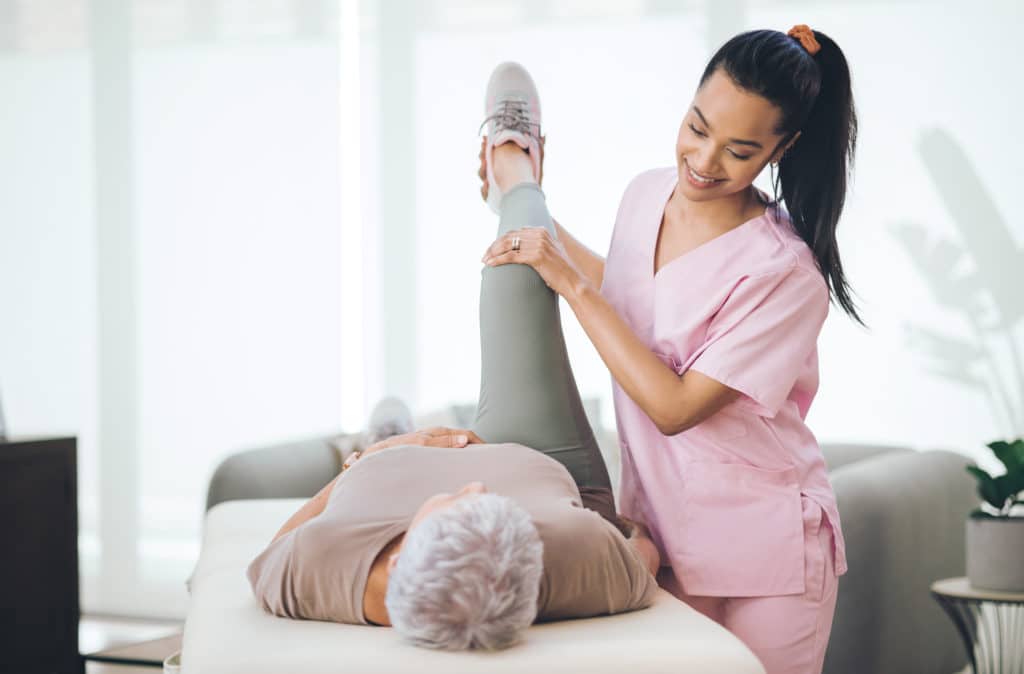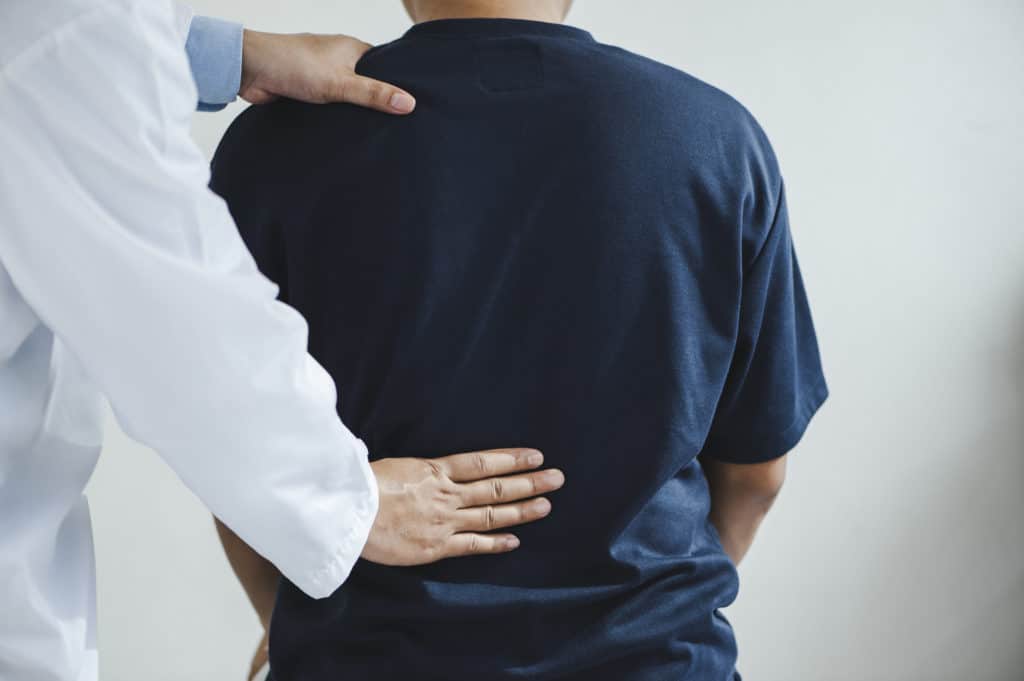
CRPS Symptoms
Learn about the different CRPS symptoms, managing them, diagnosis, and treatment options.
The information presented on this page is an overview of the average evaluation of chronic regional pain symptoms and is offered here as a resource. At J. Flowers Health Institute, our evaluations and treatment plans are customized and tailored to each individual’s needs. We specialize in providing a comprehensive team approach to your care. Our evaluations may include a chronic pain assessment, a medical evaluation, and a lifestyle assessment for help diagnosing your symptoms to provide the holistic care you deserve.
If you would like to learn more about J. Flowers Health Institute, please do not hesitate to reach out.
Complex Regional Pain Syndrome (CRPS)
Complex Regional Pain Syndrome (CRPS), also known as Reflex Sympathetic Dystrophy (RSD), is a general term used to classify excessive and persisting pain and inflammation occurring after an injury. It’s important to note that although most cases of CRPS disease occurrence have been linked with an injury to a specific body part, such as an arm or leg, this isn’t always the case for everyone affected.1
CRPS disease can occur in both adults and children. In adults, the arm is the most usually affected body part, while the legs are the most affected for children. Most patients recover completely, but the disorder can be recurring. Symptoms in a small proportion of people with CRPS can be severe and last for years. CRPS has been observed to occur more commonly in females than males.2
What is Full Body Complex Regional Pain Syndrome (CRPS)?
Complex Regional Pain Syndrome is a progressive illness. Although it may begin as pain in only one arm or body part, it can spread to other body parts with time. When symptoms of CRPS have spread all over the body, it’s known as Full Body Complex Regional Pain Syndrome (CRPS).3
How Can Complex Regional Pain Syndrome Affect Me?
It may be challenging or even outright impossible to “predict” individual responses and signs of CRPS. CRPS disease symptoms vary from individual to individual, and the severity and extent of each person’s manifestation are largely determined by the presence or absence of underlying medical conditions and overall nerve health.
For instance, individuals with CRPS disease who smoke are more likely to have prolonged and persistent symptoms. This is because smoking impedes nerve healing and regeneration rates. Other conditions that may affect nerve healing and regeneration in individuals with regional pain syndrome include chemotherapy and diabetes.
Symptoms of Complex Regional Pain Syndrome
Complex Regional Pain Symptoms usually vary in severity and duration, from individual to individual. An individual with CRPS will likely exhibit some of the following symptoms:4
Pain That is Out of Proportion to the Severity of The Injury
This is one common feature of Complex Regional Pain is that it is caused or triggered by physical injury to a body part. People with CRPS will likely feel prolonged and severe pain much greater than what should be/is normally expected.4
Extreme Sensitivity to Pain
Extreme sensitivity to pain (allodynia) is another typical symptom of complex pain syndrome. Allodynia is a condition in which a person experiences enhanced sensitivity in the affected area, making mild touch, normal physical contact, and use of the affected area extremely painful.
People with CRPS pain may also experience hyperalgesia, where people have extreme sensitivity to pain and painful stimulus.5
Pain That Spreads
As mentioned earlier, CRPS is a progressive disease, so pain in your body that started at a particular point but has now spread to other areas may be a possible indication of CRPS disease.
Skin Swelling
Skin swelling (edema) is a commonly reported symptom of regional pain syndrome. This edema can be severe and widespread or limited to a specific body area.6
Other common Complex Regional Pain Syndrome symptoms include the following:
- Decreased range of motion/loss of function, tremor
- Changes in skin temperature
- Changes in skin color
Managing Symptoms of CRPS
Usually, in most CRPS cases, symptoms heal on their own. Although these symptoms, when present, can be very challenging, there are several methods of successfully managing these symptoms. Two main methods of managing symptoms of CRPS include exercise and diet.
Exercise
Physical rehabilitation is an essential part of managing CRPS pain. Physical rehab aims to enhance activity and performance without worsening the pain progressively. This is challenging since any significant movement or stimulation of the body part would most likely exacerbate pain and other CRPS symptoms like edema and sweating. The exercise program for CRPS pain could include anything from simple stretches to hydrotherapy or even weight-bearing exercises.7
Diet
How Is Complex Regional Pain Syndrome Diagnosed?
Diagnosis for CRPS isn’t all that straightforward. The most common approach to diagnosis is examining the patient’s medical history and ruling out other illnesses with similar symptoms. Making a definite diagnosis of CRPS in the disease’s early stage is often challenging; however, CRPS is diagnosed mainly by looking for the following signs and symptoms:
- A higher-than-expected amount of pain from an injury
- A change in the appearance of an affected area
- The presence of an initial injury
- No other cause of pain or altered appearance
Complications of CRPS
Because Complex Regional Pain Syndrome affects the neurological system, it can cause several complications throughout the body.9 Most of these complications are easily avoidable if the diagnosis is made early enough and treatment starts immediately. Complex Pain Regional Syndrome has been linked with two major complications.
Tissue Wasting (Atrophy)
Muscle Tightening (Contracture)

Treatment For CRPS
There is currently no cure for CRPS, so the focus of treatment options available is to alleviate the disorder’s severe symptoms. If diagnosed early and CRPS therapy begins immediately, there is a high possibility of pain alleviation or even total elimination within a few months of treatment. Below are some of the methods used to mitigate the severity of CRPS symptoms beyond exercise and diet.
Psychotherapy
Psychological disorders like depression, anxiety, and post-traumatic stress disorder are common in people with severe CRPS. These conditions intensify pain perception and impair activity and mental function. They could even make it difficult for patients to seek medical help and participate in rehabilitation. Psychotherapy can be employed to manage these disorders and improve the recovery of CRPS patients.
Medications
Several types of medications are beneficial in effecting CRPS pain relief, especially when given early enough. However, it should be noted that no single drug is a guaranteed fix for everybody.
Types of Medications
- Common pain relievers (e.g., acetaminophen and NSAIDS)
- Neuropathic pain relievers (e.g., gabapentin, amitriptyline and pregabalin)
- Topical local anesthetics (e.g., lidocaine and fentanyl)
- Corticosteroids
- Opioids (e.g., morphine and hydrocodone) are beneficial for managing severe conditions such as CRPS after surgery
- Antidepressants
Other Types of Treatment Options
- Spinal cord stimulation
- Spinal-fluid drug pumps
- Sympathetic nerve block
- Surgical sympathectomy
Learn More at J. Flowers Health Institute
For more information or answers to any possible questions you might have, you can reach out to J. Flowers Health Institute via any available channels. We look forward to connecting with you and helping you along in your journey.
References
- https://www.ncbi.nlm.nih.gov/pmc/articles/PMC5548282/
- https://www.betterhealth.vic.gov.au/health/conditionsandtreatments/complex-regional-pain-syndrome-crps#where-to-get-help
- https://medlineplus.gov/complexregionalpainsyndrome.html
- https://www.webmd.com/pain-management/guide/complex-regional-pain-syndrome
- https://www.webmd.com/pain-management/what-is-hyperalgesia
- https://www.msdmanuals.com/professional/neurologic-disorders/pain/complex-regional-pain-syndrome-crps
- https://www.nhs.uk/conditions/complex-regional-pain-syndrome/treatment/
- https://dallas.legalexaminer.com/health/what-makes-crps-worse/#:~:text=Eating%20an%20anti%2Dinflammatory%20diet,apples%2C%20blueberries%2C%20and%20pineapples.
- https://www.medicalnewstoday.com/articles/184338#complications
- https://www.medicalnewstoday.com/articles/325316






